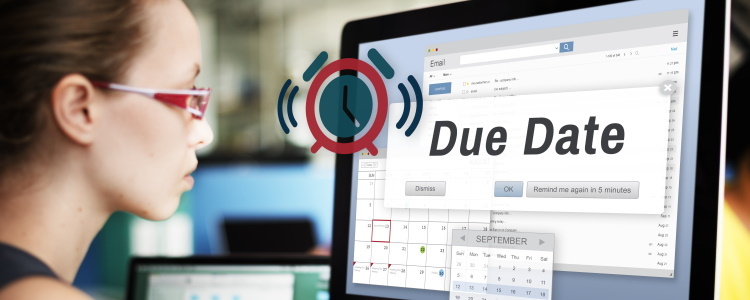Even amid mandatory shutdown orders as a result of the coronavirus, some services have been deemed essential, and this means car dealerships are staying open in many areas. Even if the dealer you want to work with is under a temporary shutdown, there are several steps you can take now to make the car buying process go more quickly once you can safely travel to the dealership.
Coronavirus and Car Buying
As a bad credit borrower, there are several requirements you have to meet in order to qualify for financing through a subprime lender. If you’re at home riding out the coronavirus, or COVID-19, pandemic and you need an auto loan, there are four steps you can take from the comfort of your home:
1. Know Your Credit Situation
This is essential to getting the right deal when it comes to car buying. If you’re in a poor credit situation, you need to know where you stand so you can get ready to set up a budget and check the interest rate you might qualify for – before you head to a dealer. Taking this step may even keep you from falling in love with a vehicle you just can’t afford right now.
Getting your credit score and reports allows you to see what a lender sees, and gives you the opportunity to see which areas of your credit you can improve on to make the most of your negotiating power when you visit a dealership. This simple step applies to normal car buying situations, as well as getting your best deal once the lockdown lifts.
To get a copy of your credit report from each of the three national credit bureaus, simply visit www.annualcreditreport.com, where you’re allowed a free copy from each bureau – TransUnion, Experian, and Equifax – once every 12 months.
Finding out your credit score at the same time may result in a small fee. If you don’t want to or can’t pay, you can check out the free credit monitoring services available online.
2. Gather Your Documents
 As a bad credit borrower, there are several documents you need to bring with you to the dealership in order to be considered for an auto loan. Let’s take a look:
As a bad credit borrower, there are several documents you need to bring with you to the dealership in order to be considered for an auto loan. Let’s take a look:
- Proof of income – Most subprime lenders require your most recent computer-generated paycheck stub showing year-to-date income, proving that you make at least $1,500 to $2,000 a month before taxes.
- Proof of residence – This is proven with a recent utility bill or bank statement in your name, at the address listed on your application.
- Proof of a working phone – Bring in your most recent phone bill from a landline or contract cell phone in your name. Prepaid phones don’t count.
- A valid driver’s license – This serves as proof of identity.
- A down payment – Usually a requirement for bad credit car loans, most lenders ask you to provide a down payment of at least $1,000 or 10% of a vehicle’s selling price.
The details vary by lender, so you may be asked for more or less paperwork than what we’ve listed. Additionally, most lenders require a list of five to eight personal references, complete with names, addresses, phone numbers, and email addresses.
3. Calculate Your Budget
When you need vehicle financing, putting together a budget is key. Not only do you have to meet the lender’s minimum income requirement, you also need to have enough available income to afford an auto loan. Lenders look at two calculations when they’re determining this: your debt to income (DTI) ratio and your payment to income (PTI) ratio. You can do this at home, as well.
The DTI ratio shows lenders how much of your income is already being used for your monthly bill payments, while the PTI ratio shows them how much of your monthly income is taken up by your car loan and insurance payment. Lenders need you to be able to afford both your loan payment as well as a full coverage auto insurance policy, which is required when you finance a car.
To calculate your DTI ratio, add up all your bills, including an estimated vehicle and insurance payment, and divide the total by your gross (pre-tax) monthly income. Lenders don’t typically consider you for a loan if you’re using more than 45% to 50% of your income for your current bills.
To see your PTI ratio, multiply your gross monthly income by 0.15, and then 0.20. Most lenders won’t approve your loan application if an estimated loan and insurance payment is more than 15% to 20% of your gross income. In fact, the lower your PTI ratio the better. It’s also good to know that lenders typically estimate $100 a month for auto insurance, so you should do the same when putting together a budget.
4. Research Vehicles From Home
Now that you know where your credit stands and have a budget, you can start looking at vehicles that fit your budget. Keep in mind that when you have bad credit, it’s not the time to finance your dream car. You should search both new and used vehicles that are affordable, reliable, and hold their value.
You can check into cars that fit your needs, and even see the latest deals that are available during this uncertain time, by visiting websites such as CarsDirect and The Car Connection. There are many automakers that are offering special car deals in light of the coronavirus situation.
Ready to Find a Dealership in Your Area?
Even if your credit is less than perfect, if you’re ready to take the next step and get a coronavirus car deal, simply fill out our easy, fast, and free auto loan request form.
Let Auto Credit Express do the work of finding a dealer for you. We work with a nationwide network of special finance dealerships that have the lenders available to help in unique credit situations. To get started, just click here.
















